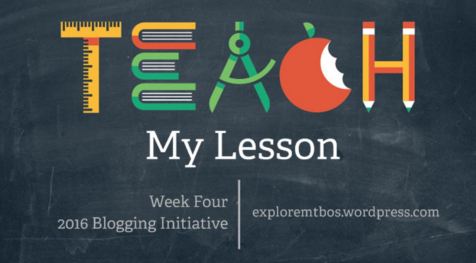
I love lesson study. It provides a structure for slowing down and digging into specific standards and practices, then examining how they affect student learning. This week I was fortunate to have the opportunity to facilitate lesson study with our fourth grade team.
If you’re not familiar with lesson study you can learn more here. Essentially it involves developing a research theme and goals, conducting background research (including formative assessment data), creating and implementing a research lesson, and a post-lesson debrief (driven by data collection during the research lesson). Also, it’s common to revise the research lesson after the first implementation, teach the lesson again, and have a final debrief. Our lesson study schedule was crafted from a timeline embedded within the busy nature of teaching. We carved out a 2 hour after school planning (thanks to strong principal $upport) and a 40 minute PLC. Also, we have a half-day TDE which will allow us to implement the research lesson twice, with a debrief and time to revise in between the two implementations. Altogether, we will have about 6-7 hours for this cycle of lesson study. In my past experiences I’ve always had 12-18 hours, so this is a tight schedule.
The driving question behind our lesson study is, “How do we incorporate what’s working in our intervention block into core instruction?” The idea is that, if we can support students in similar ways during core instruction, we’ll have less students in need of intervening. I selected a few standards that have been challenging this year and presented them to the team. After a little back and forth we settled on CC.4.OA.2 (aka MAFS.4.OA.1.2 in Florida):
Multiply or divide to solve word problems involving multiplicative comparison, e.g., by using drawings and equations with a symbol for the unknown number to represent the problem, distinguishing multiplicative comparison from additive comparison.
Prior to Meeting
I put together a pre-assessment that would support our study of how students were approaching problems that involve multiplicative comparison. The assessment included three compare problems, each having the unknown in a different position (see Table 2 on p. 89 of the CCSSM document). Each teacher gave the assessment and brought the student work to our first meeting.
The Planning
We took about 15 minutes to orient to lesson study by going over the nuts and bolts of the process, then read chapter 8 of Lesson Study: A Handbook of Teacher-Led Instructional Change by Catherine Lewis which details some common misconceptions of lesson study. Next, we spent some time discussing what it is about the intervention block that is working and came up with this list:
Assessment driven, small group, novelty of a new person, non-routine, exposure, “spiraling” effect, idea of a 2nd chance, research-based resource, differentiated
After this, we dove into the student work, analyzing it item by item. We found that the majority of students could find a solution on the result unknown problems, but struggled with the measurement and partitive division problems that involved comparison. Also, we noticed that a lot of students just took both numbers and multiplied them. Students who were successful typically utilized a number line. We hypothesized that they saw the word “times” and chose to multiply, not really making sense of the problem. Based on this data, we decided to use a partitive division compare problem as the main task of the lesson.
Next, we dug into the available research about comparison problem types. I knew we were time-crunched, so I pulled short chunks of research that would inform us on compare problems and what we may include in the research lesson. We used pg. 29 from K-5 Progression on Counting and Cardinality and Operations and Algebraic Thinking, A short text from Cognitively Guided Instruction on multiplicative comparison problems, and the rubric for Throwing Footballs (a formative assessment task on this standard, complete with detailed rubric). After reading the research, we decided to focus on using visual representations throughout the lesson to support students explanations of problems involving multiplicative comparison.
The Lesson
We embedded opportunities for student discourse about the visuals and the main task throughout the lesson. Here’s the general flow of the lesson:
1) Warm-up – We started by showing students a bar model visual (see below) and prompting with “What do you notice? What do you wonder?” The idea was to use the visual to get students comfortable with the language of multiplicative comparison. This idea came from the first level of the rubric for the Throwing Footballs task.
2) We really liked the football theme with Super Bowl 50 this weekend, so we modified the formative assessment task to be the main task for the lesson:
Two students were trying to see how far they could throw a football. Sadie threw the football 24 yards which was 4 times the distance William threw the football. How many yards did William throw the football?
We anticipated what students would do with the task and planned to focus on encouraging students to make a visual model that matches the problem to encourage sense-making.
3) In the wrap-up (or summary) portion of the lesson we planned on displaying student work, specifically a bar model (or number line) that matches the context of the problem and having students justify which equation (4 x 6 = 24 or 4 x 24) matches the visual model. We planned on addressing 4 x 24 since this is the error we saw most often in the pre-assessment.
What’s Next
This week we will implement the research lesson with two classes. We’ll collect data on what visual models students use and how they’re able to describe problems involving multiplicative comparison. We’re hopeful that the visual representations will support students in making sense of these types of problems. Next week I’ll post a follow-up with samples of student work and how students responded to the research lesson.
